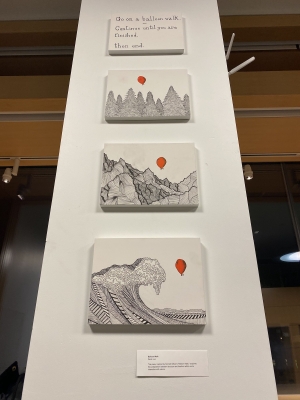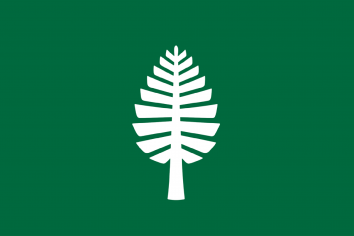
Breaking Down the D-Plan and Course Selection!
As we near closer to the end of Winter Term, course selection for the Spring Term just opened up and the amount of choices for classes is simultaneously exhilarating and maybe just a little disappointing — sometimes I really wish I could take them all.
To understand course selection at Dartmouth, it's important that you understand the D-Plan. The way the D-Plan works is pretty straightforward, and definitely starts to make more sense the longer you spend on campus hearing about the different plans everyone is making around you. Dartmouth College runs on the quarter-system, which means that there is an academic term for every season: Fall, Winter, Spring, and Summer. For your first and senior years, Dartmouth asks that you stay on campus for your Fall, Winter, and Spring — much like other schools! Additionally, Dartmouth asks that for your sophomore year, you stay on campus for the Summer — a special part of the Dartmouth experience called Sophomore Summer that I'm super excited to experience in T-minus just over a year. But for the rest of your sophomore year in addition to your junior year, you get to decide which term you will take "off" — you get to pick when "summer break" happens, meaning you can take the summer off like usual or choose to make it happen during another term. You also get to pick which terms you might be studying abroad, on-campus, or doing an exchange program. The possibilities are pretty unlimited.
In a Dartmouth term, students usually take three classes. In special cases, some students elect to take four classes, and some elect to take two classes, but the standard amount, by far, is three classes. Because we have ten-week terms, having just three classes allows us to move really quickly through a class, making the most of the term while also learning an incredible amount in a relatively really short amount of time. Personally, I love the pacing, but what I don't love sometimes is being able to only choose three classes. I find it really hard to choose just three classes because of how many look interesting (and also how many recommendations upperclassmen give me about professors that sound like wonderful people), but both times I've done this — for the Fall and for this Winter — I've ended up with amazing classes and incredible professors.
Here's how class selection works. During a day in the middle of a given term, the "timetable" opens up. This is basically a list of all of the classes offered for the next term, what time they will be held, what department, which professor, and what distributives the class provides. To graduate from Dartmouth, you need to have fulfilled both your major and distributive requirements — the classes required by your major and the classes required as part of Dartmouth's liberal arts diploma. This basically means Dartmouth wants you to explore a bunch of different things, which could sound intimidating if you didn't know too much but is actually kind of perfect, especially for someone like me.
.

If you've been reading my blog, you probably know by now I'm not a STEM major. One of the distributive requirements is called Quantitative and Deductive Science (QDS). You're probably thinking, 'That sounds like a math class.' You're right. Math classes tend to give you a QDS distributive after you finish. The problem is that math and I don't get along, and yet I ended up getting this distributive completed in my first term. How? Introduction to Linguistics (LING.001). Because linguistics asks that you think critically and deductively about language data, I could pursue what I'm thinking may be my major while also obtaining the distributive requirement that scared me the most. Thanks, Dartmouth.
After you pick your top three classes, Dartmouth has an algorithm that will try to process everybody's picks giving the most people their top choices as possible. After a certain amount of time, results come out, and you can see which classes you got. If you get all your choices (like me this Winter), you're done! If you're missing one or two, you can try again or you get to just pick another class. The process is straightforward, and even if you miss a class, it'll likely be offered again in a different term and you'll be able to enjoy it just the same.
I'm coming to love the little parts in Dartmouth's academic process just as much as I've really started to engage with the fun and social events on campus. Dartmouth is really being conducive to my wanting to learn about so many different things, and I can't say I would have it any differently. After a week of picking courses, my friends and I had the opportunity to celebrate by going to a formal put on by Native Americans at Dartmouth (NAD), one of my favorite communities on campus for all of the Indigenous students at Dartmouth. The day after, we decided to take my friend Kaulana's best friend from high school to Occom Pond for some ice skating and hockey, and she's the wonderful photographer that took the cover picture for this post! That's us enjoying ourselves on a Saturday afternoon, our courses picked, and our excitement for Spring term (it was 10 degrees, if you're wondering) growing extensively.
I hope to be able to give you guys a deeper look into the academic aspects of Dartmouth in my future posts. Aloha for now!

















